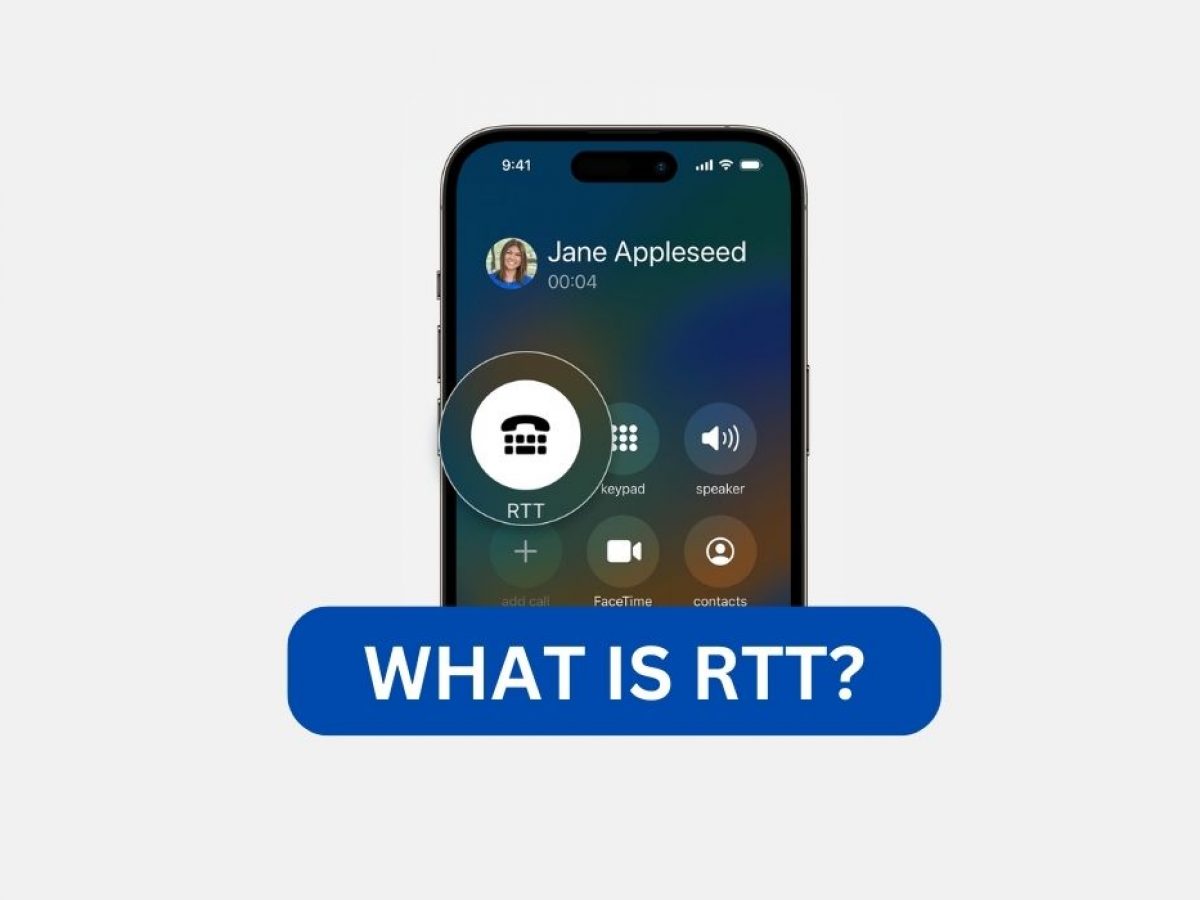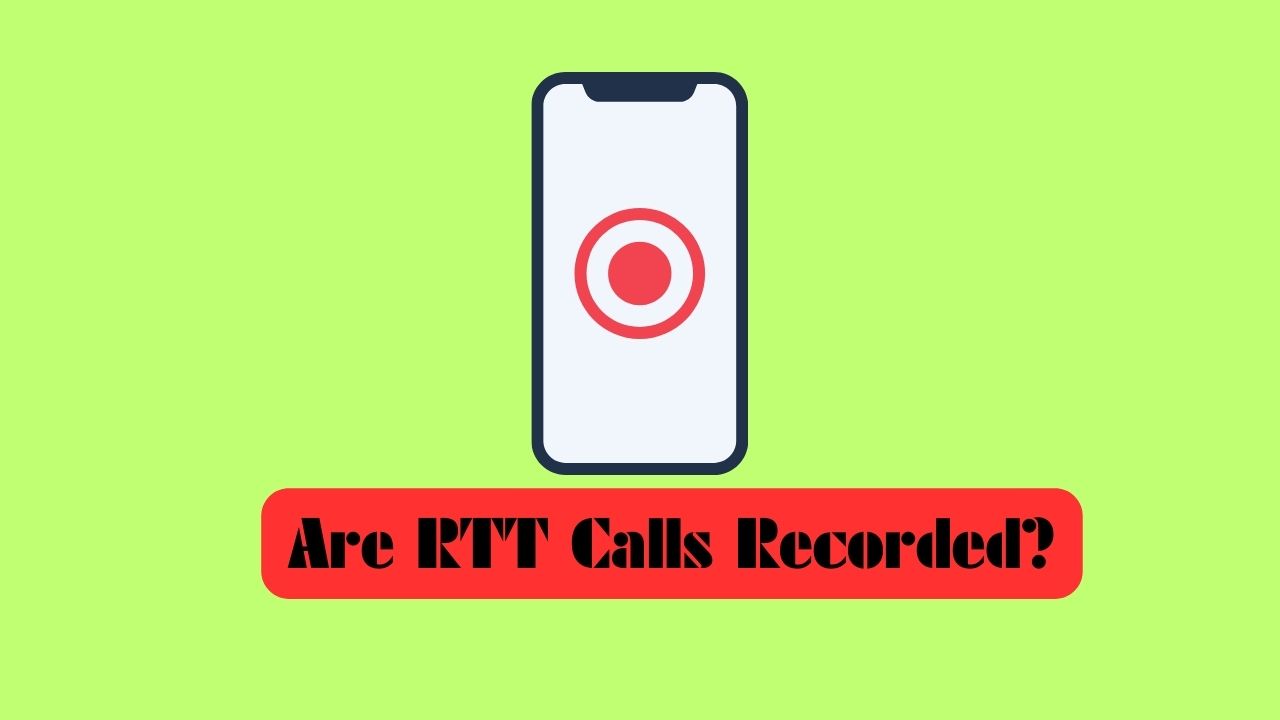If you use RTT (Real-Time Text) calls to communicate, especially if you have hearing or speech impairments, you may have asked yourself: “Are my RTT calls being recorded?”
It’s something that might concern you. In this article, I’ll help you explore all the relevant answers. Here, you’ll find out if your RTT call is being recorded and out of RTT & TTY, which is better.
Let’s get started –
What is RTT calling?

RTT (Real-Time Text) calling is a communication method designed to transmit text messages over a network immediately. This allows the recipient to read the message while it’s composed, even before it’s sent.
This method is particularly useful for people with hearing or speech difficulties as it enables seamless conversation flow, similar to a voice call. Rather than waiting for each party to complete their messages as in traditional text messaging, RTT allows for an interactive real-time text exchange.
Here are the key features of RTT calling:
- Immediate text transmission: When you enter a character, it’s sent to the recipient. This enables a conversational style of text messaging.
- Supports call with sound or silent mode: You can use voice and text together or text alone, based on your preference or need, making it a versatile communication tool.
- Accessibility tool: RTT can help people who are deaf, hard of hearing, or have speech difficulties communicate more easily.
Note:
Who Uses RTT Calling in 2023?
RTT calling is primarily used by:
- People with hearing or speech impairments, providing them with a real-time communication method.
- Emergency services, such as 911 centers, improve communication during distress scenarios.
- Telecommunications providers and their customers, regulated by entities like the Federal Communications Commission.
- General smartphone users who prefer an immediate text transmission mode for communication.
Are RTT Calls Recorded?
Honestly, RTT calls in themselves are not typically recorded.
However, on iPhones with iOS 10 or later, transcripts of previous RTT calls can be found in the Phone app.
Therefore, while the call itself is not recorded, there’s a system already in place for maintaining text-based records of the communication that transpired during the call.
How to use RTT Calls on Android?
Here are the steps to enable and use RTT (Real-time Text) calls on an Android device:
- Turn on RTT:
- Open the Phone app.
- Tap on the three-dot icon (or More, on some devices), then select Settings.
- Tap on Accessibility, then select RTT Call.
- Toggle it on.
- Make an RTT call:
- Open the Phone app.
- Dial the number you want to call, then tap the Dial button.
- If you made the call, tap RTT. If you received the call, tap RTT when the phone rings.
How to use RTT Calls on iPhone?
Sure, RTT (Real-time text) is also supported on iPhone. Here are the steps on how to enable and use RTT on iPhone:
- Turn on RTT
- Open the “Settings” app.
- Select “Accessibility”.
- Tap on “RTT/TTY”.
- Toggle on “Software RTT/TTY”.
- Placing an RTT Call
- Open the Phone app.
- Choose a contact.
- Select the phone button, then choose RTT/TTY Call or RTT/TTY Relay Call.
- Once the call starts, choose RTT to start the chat.
- Answering an RTT Call
- When an RTT call arrives, you can either accept or reject it.
- After you accept the call, select RTT to start chatting.
Remember that the above steps might differ slightly depending on iOS versions.
For more detailed instructions regarding your particular iPhone version, you might want to refer to the official Apple Support.
Be aware that while RTT calls do not transmit voice by default, you can change this setting to initiate a standard voice call that then shifts to RTT.
How to Turn off RTT?

On Android:
- Open the Phone app.
- Tap on the three-dot icon (or More, on some devices), then select Settings.
- Tap on Accessibility.
- Find ‘RTT call’ or a similar option and toggle it off.
On iPhone:
- Open the Settings app.
- Select Accessibility.
- Tap on RTT/TTY.
- Toggle off Software RTT/TTY and Hardware TTY (if available).
Why Does RTT Randomly Turn on Android?
There are several reasons why the RTT feature randomly turns on in your Android device:
- Accidental Activation: If you accidentally press the RTT button during a call, the RTT mode will be activated, and the other party will receive a notification.
- Software Bugs: Sometimes, glitches in the software can lead to the unintentional activation of the RTT feature.
- Phone issues: It might be due to phone issues like battery problems or the fault in the power button.
These factors contribute to RTT being activated without your explicit input.
RTT vs TTY: Comparison
Here is a detailed comparison between RTT (Real-Time Text) and TTY (Teletypewriter):
RTT (Real-Time Text) Additional Points:
- No Special Equipment Required: RTT functions well on any device with built-in RTT capability.
- Real-time Conversation: The real-time feature of RTT allows for a more fluent conversation than TTY’s sequential communication.
- Speech and Text: RTT allows the combination of text and speech; this means users can speak and type simultaneously.
- Enhanced Speed: The instant sending of each keystroke significantly speeds up communication compared to TTY.
TTY (Teletypewriter) Additional Points:
- Extra Equipment Needed: TTY requires special equipment, which may not be compatible with all devices.
- Sequential Conversation: Messages must be typed out fully before sending, leading to less fluid conversation.
- Text Only: TTY is mainly text-based, with no support for concurrent speech.
- Slower Communication: Because of the need to finish typing entire messages before sending, TTY can be slower than RTT.
In short, RTT and TTY serve similar purposes; RTT is generally more user-friendly and efficient, with greater compatibility with modern devices, making it the better choice for most end users.
Parting Thoughts
I hope this article gave you a clearer picture of RTT (Real-Time Text) call privacy. Understanding whether RTT calls may be recorded is crucial for individuals, especially those with hearing or speech impairments.
Remember, you have the right to be aware and try to protect your privacy.



